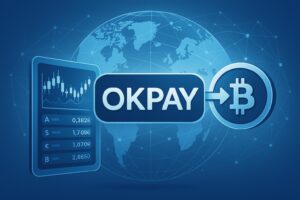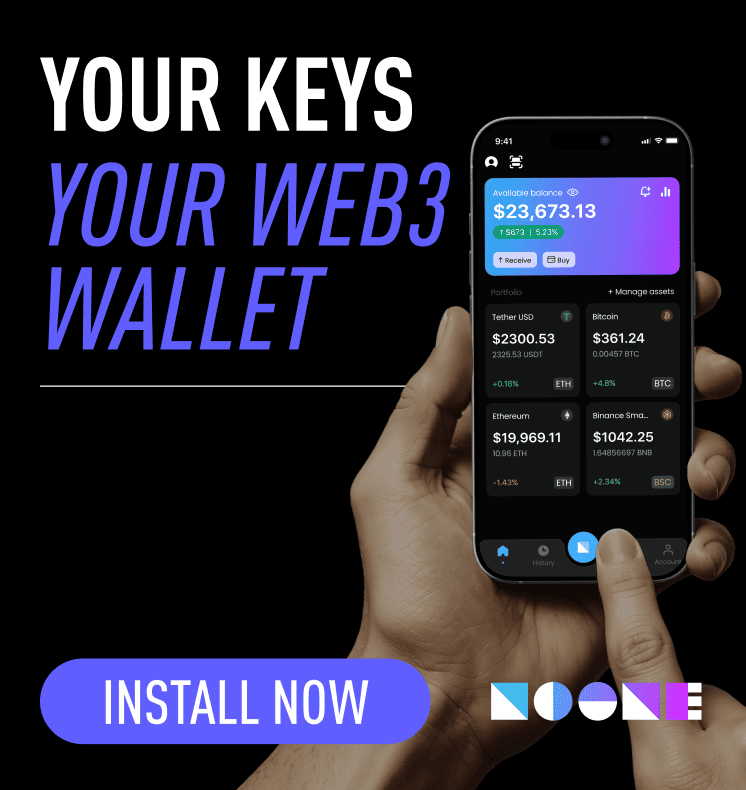
OKPAY
OKPAY was an international payment system based on the internet that allowed clients to send, receive, exchange currencies, and load e-wallets via multiple methods. Renowned for accepting both conventional currencies as well as digital currencies such as Bitcoin, OKPAY became instrumental in bridging the two worlds—fiat and cryptocurrencies. Though it is no longer active under that title, OKPAY’s contribution toward the initial payment infrastructure in the world of cryptos is considerable. This article discusses what OKPAY was, how it worked, and why it gained relevance in the world of cryptos.
Table of Contents
ToggleBackground and History of OKPAY
OKPAY was founded in 2009 by developers and finance experts with the objective of offering a fast, secure, and flexible online payment platform. At the time, the online financial services market was dominated by a few major players, and OKPAY emerged as an alternative emphasizing flexibility and global accessibility.
Initially, the platform specialized in conventional online payment services, allowing users to transfer funds, pay bills, and fund accounts in different currencies. Over time, it gained popularity among freelancers, web merchants, and those needing affordable international remittances. During the 2010s, as Bitcoin gained traction, OKPAY began supporting virtual currency payments, including Bitcoin wallet funding and conversions between fiat and digital currencies.
By integrating Bitcoin, OKPAY attracted users seeking access to crypto without relying on major exchanges. It became one of the earliest payment processors to openly accept digital assets, gaining legitimacy among early crypto adopters.
How OKPAY Functioned
OKPAY worked as an electronic wallet system. Users could create accounts, verify their identity, and start transacting in various currencies. Its services included:
-
Internal transfers between users
-
Funding through bank transfers, cards, and Bitcoin
-
Currency exchange within the wallet
-
Withdrawals to bank accounts, cards, and third-party systems
Its interface was user-friendly and accessible globally. Business accounts were available, allowing service providers and online merchants to accept payments in multiple currencies, including Bitcoin. OKPAY’s system could be integrated into e-commerce websites and accessed via APIs.
OKPAY complied with Know Your Customer (KYC) and Anti-Money Laundering (AML) regulations, requiring identity verification for full account functionality. This enabled the company to operate in various jurisdictions.
OKPAY and Bitcoin Integration
One of OKPAY’s standout features was its early support for Bitcoin. Users could:
-
Deposit Bitcoin into their OKPAY account
-
Convert Bitcoin into fiat currencies
-
Withdraw Bitcoin to external wallets
-
Use Bitcoin for payments at merchants (indirectly via exchange)
This positioned OKPAY as a rare intermediary between traditional financial institutions and the early crypto economy. While most banks avoided cryptocurrencies, OKPAY embraced them, enabling routine use of Bitcoin for individuals.
It helped small businesses accept Bitcoin payments without building their own infrastructure. For others, OKPAY served as a crypto-to-fiat payment gateway.
User Base and Popularity
OKPAY had users in more than 100 countries. Its multilingual platform, diverse funding options, and moderate fees made it attractive to businesses and individuals alike. Key user groups included:
-
Freelancers and remote workers receiving cross-border payments
-
Online businesses needing international payment support
-
Crypto users seeking easy Bitcoin-to-fiat exchange options
-
Gamblers and high-risk business entities without access to traditional banking
OKPAY became especially popular in regions where PayPal or local alternatives were unavailable, including Eastern Europe, Latin America, and parts of Asia.
Despite its growth, the company maintained a relatively modest profile compared to players like PayPal or Skrill. Its appeal was rooted in functionality rather than aggressive marketing.
Security and Account Verification
Security was a core priority for OKPAY. Account protections included:
-
Two-Factor Authentication (2FA)
-
IP address monitoring
-
Email alerts for account activity
Verified users received higher transaction limits and access to more funding methods. Verification required standard documents like a passport or national ID, along with proof of address. OKPAY aimed for quick processing to accommodate users needing fast access to international payments.
While phishing and social engineering attacks were reported—common at the time—no major data breaches or hacks were publicly known.
Compliance and Regulation
OKPAY initially operated under Montenegrin jurisdiction, later relocating its licenses to comply with stricter regulations. The company maintained transparency by publishing its terms, fees, and operational policies openly.
Its early and firm focus on KYC/AML helped it maintain partnerships with banks and payment processors—even while supporting Bitcoin. This blend of crypto integration and regulatory compliance made it a unique hybrid platform during its era.
Acquisition and Transition into MoneyPolo
In 2017, Mayzus Financial Services Ltd, a UK-registered financial institution, acquired OKPAY. After the acquisition, users were migrated to a new platform under the MoneyPolo brand.
This marked the end of OKPAY as an independent brand. Its user base and features were integrated into MoneyPolo’s broader service offering, which included additional financial products like prepaid cards and IBAN accounts.
The rebranding was pre-planned, and most services remained uninterrupted. However, some users expressed concerns regarding privacy and ongoing crypto support on the new platform.
Impact on the Cryptocurrency Market
OKPAY’s early embrace of Bitcoin made it a pioneer among online payment systems. Before stablecoins and mainstream crypto exchange integration, OKPAY enabled users to bridge the gap between digital and fiat currencies.
It was one of the first platforms to offer real-world usability for crypto-fiat interchangeability, inspiring future projects to view Bitcoin not just as an asset, but as a means of payment.
Though OKPAY is no longer active, its legacy endures among users, businesses, and developers it empowered. For many early adopters, it served as a gateway into crypto finance before modern systems were widely available.
Drawbacks and Restrictions
Despite its strengths, OKPAY had limitations:
-
Lengthy verification procedures in some countries
-
Withdrawal delays during peak times
-
Limited customer support responsiveness
-
Occasional issues with third-party funding services
Due to its connection with high-risk industries like gambling, OKPAY sometimes struggled to maintain banking relationships, affecting service availability in certain regions.
Some users were uneasy with the rebranding and acquisition, preferring the original platform’s interface and approach.
Conclusion
OKPAY was an influential player in the evolution of online payments, particularly in relation to cryptocurrency. It offered one of the earliest practical methods to exchange Bitcoin for fiat, while also delivering a full suite of conventional financial services. Its global reach, regulatory compliance, and pioneering crypto support made it a crucial link between digital currencies and traditional finance.
Though no longer active, OKPAY remains a notable chapter in the history of crypto and digital payments, showing how innovative solutions helped pave the way for today’s financial technology landscape.














 Twitter
Twitter
 Telegram
Telegram
